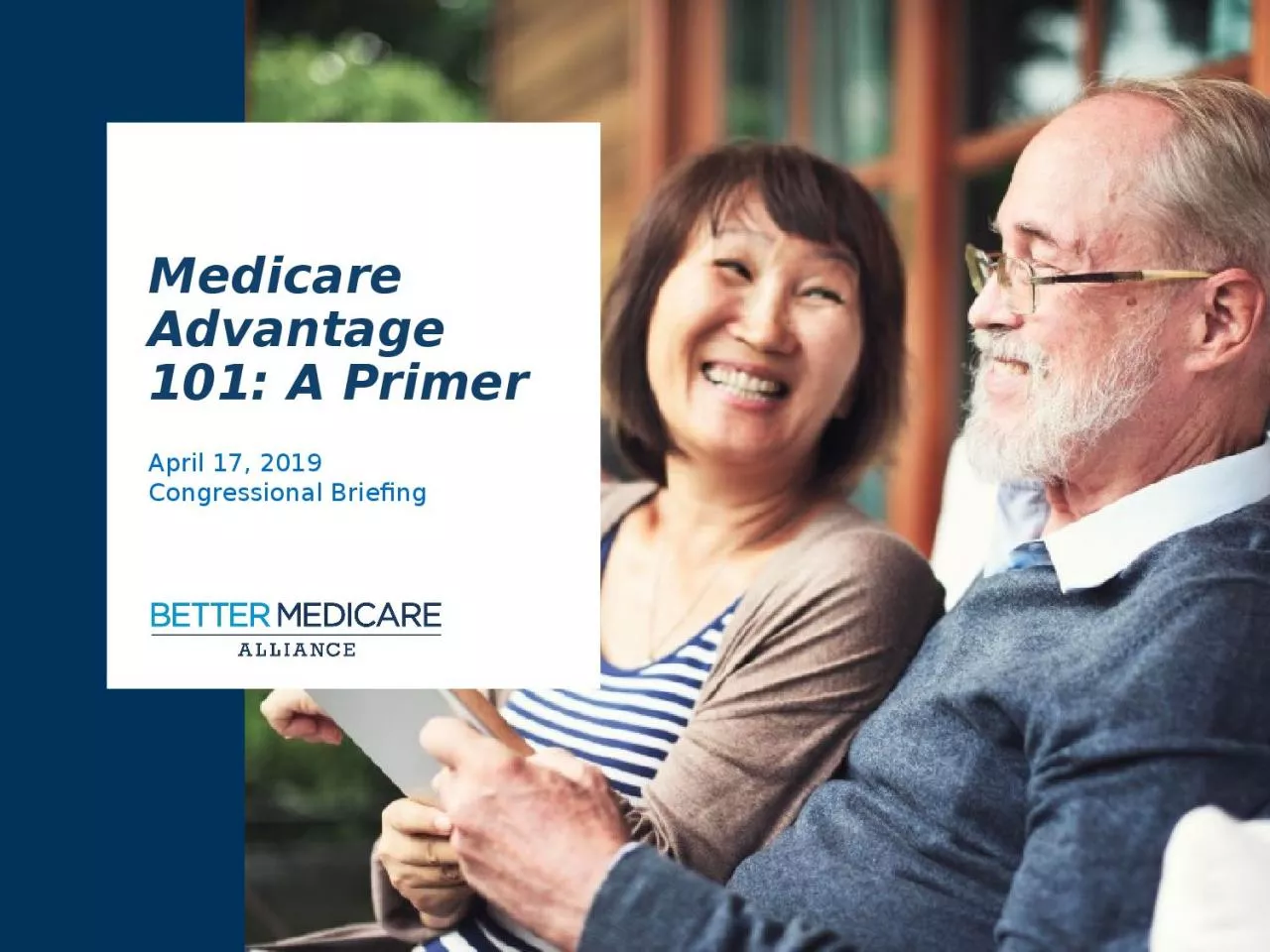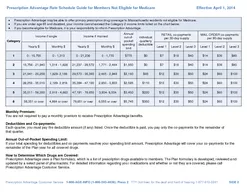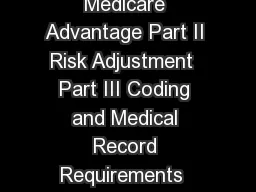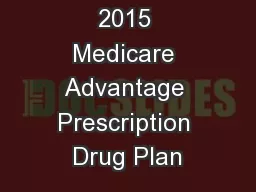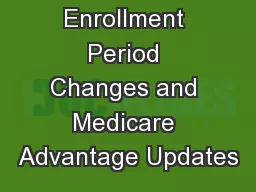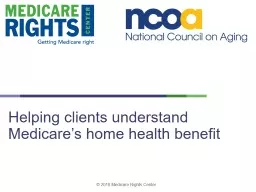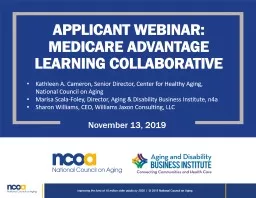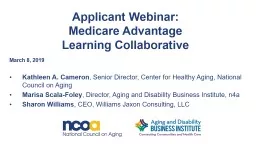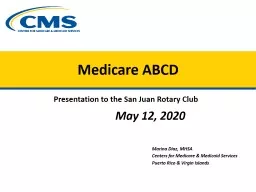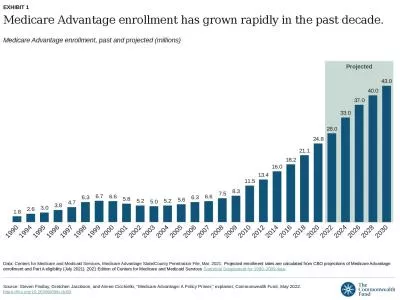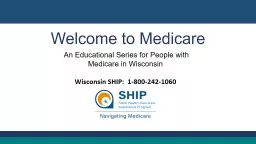PPT-Medicare Advantage 101: A Primer
Author : wang | Published Date : 2024-01-03
April 17 2019 Congressional Briefing Todays Agenda 1210 1220 Introduction amp Opening Remarks 1220 1255 Medicare Advantage 101 A Primer 1255 125 Panel Whats Working
Presentation Embed Code
Download Presentation
Download Presentation The PPT/PDF document "Medicare Advantage 101: A Primer" is the property of its rightful owner. Permission is granted to download and print the materials on this website for personal, non-commercial use only, and to display it on your personal computer provided you do not modify the materials and that you retain all copyright notices contained in the materials. By downloading content from our website, you accept the terms of this agreement.
Medicare Advantage 101: A Primer: Transcript
Download Rules Of Document
"Medicare Advantage 101: A Primer"The content belongs to its owner. You may download and print it for personal use, without modification, and keep all copyright notices. By downloading, you agree to these terms.
Related Documents

